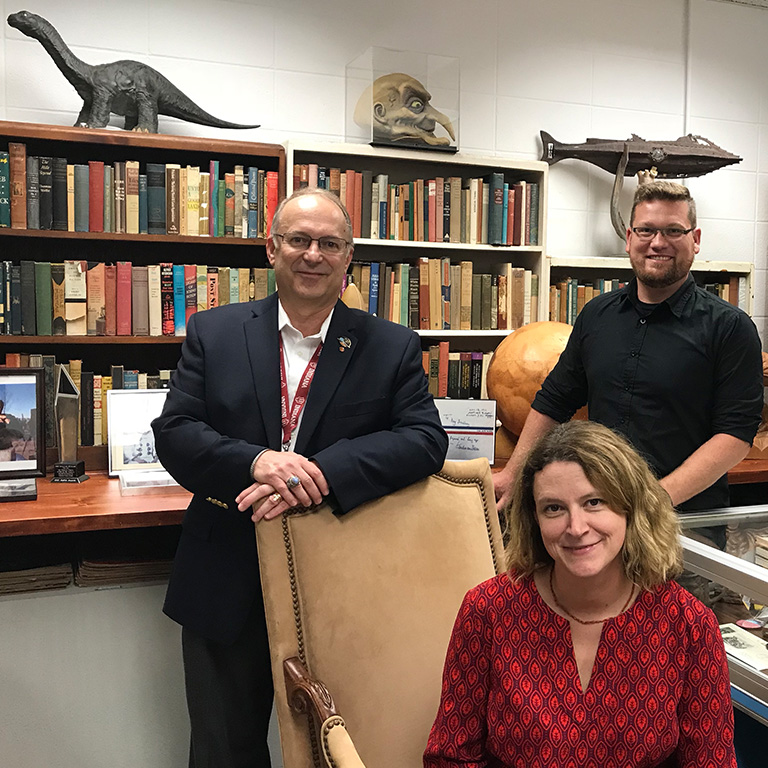Indiana University created University Collections as part of a sustained effort to ensure that all of IU's collections, regardless of size, location, or resource level, are properly preserved, housed, and made accessible to all members of the IU Community, the general public, and scholars everywhere.
University Collections
Where IU once was dominated by siloed collections, with many left without significant resources to support proper stewardship, University Collections seeks to bring a newfound unity. This fresh vision provides all collections, no matter their size or geographic location, with access to advocates who work to find ways to share resources, provide training opportunities, and assist in creating necessary plans and policies to ensure the safety and longevity of all collections. This new vision has already unearthed many previously unacknowledged collections across the state, aided collections during emergencies and moves, and enhanced exposure for IU's holdings.

University Collections, located in the historic McCalla School, is the centerpiece for these efforts, where collections from Bloomington and other IU campuses are brought into conversation with one another, including collections in the visual arts, humanities, media, and beyond.


